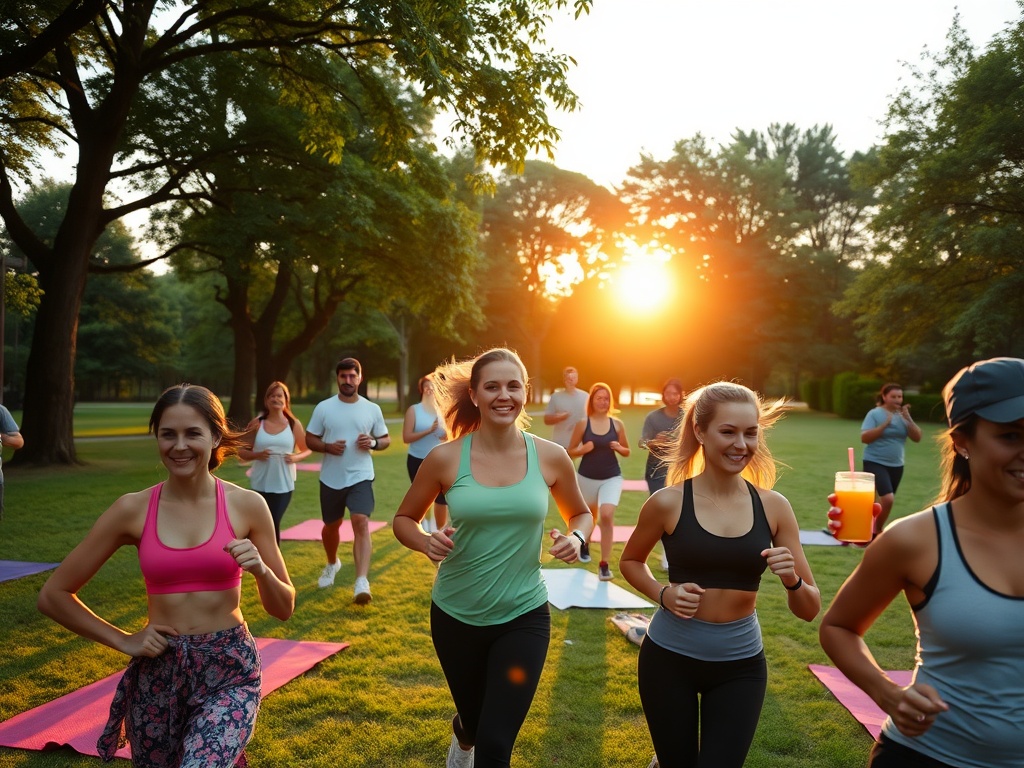I run five times a week

Amanda Daley, Professor of Behavioural Medicine, Director of the Centre for Lifestyle Medicine and Behaviour, Loughborough University
Daley covers approximately four to five miles during her runs. “Running has been a passion of mine for many years. I engage in this activity not only for its health benefits but also for the rare moments of solitude it provides, allowing me to think more clearly. I often accumulate challenges or dilemmas throughout the week, and I find that running helps me process these thoughts without the usual distractions of daily life, like checking emails. Moreover, running serves as a barometer for my schedule; if I can’t find time to run, I realize my calendar is overflowing and needs adjustment.
My health is paramount. Without it, fulfilling my various responsibilities becomes difficult, so I strategically plan my day around my running sessions, which I prefer to do in the morning after breakfast. Running on an empty stomach is not an option for me, and attempting it later in the day often leads to rushed workouts or low energy levels that detract from the experience. I’m also not a fan of running in the dark. My goal is to maintain a routine of five runs per week, each lasting around four to five miles. On Sundays, I indulge in a longer run of about an hour, often while listening to Desert Island Discs.
Additionally, I prioritize reducing the amount of time I spend sitting each day. To achieve this, I incorporate what I call “activity snacks” or Snacktivity™, which are brief bursts of physical activity lasting two to five minutes. These mini-exercises help break up prolonged sitting periods and provide refreshing little ‘time-outs’ throughout my day.”
I do strength training or Pilates before my family wakes up
Zoe Griffiths, Registered Dietitian and Vice President, Behavioural Medicine at Numan
Griffiths emphasizes the importance of structured exercise. “As a full-time working mother, incorporating my training into a busy schedule requires meticulous planning and a degree of flexibility. At 43, I’m increasingly aware of how crucial it is to preserve my muscle mass and bone health, particularly as we naturally lose three to five percent of our muscle mass each decade after turning 30, and an additional one percent per year after the age of 60. I am determined to hold onto what I have.
By default, my lifestyle is quite active, yet I consciously prioritize structured exercise. I prefer to train early in the morning before the household stirs; this time allows me to focus on my health and sets a positive tone for the day ahead. Mornings suit me best, and I like to train on an empty stomach, refueling quickly afterward with a protein shake or a protein-rich breakfast. My weekly routine comprises a blend of walking, jogging, strength training, and Pilates. Furthermore, I utilize a standing desk at work, fully aware of the detrimental effects prolonged sitting can have on health.
On most days, I walk my dog either in the morning or evening, and on weekends, I make it a point to enjoy a relaxed 5-7 km jog. I’m not one to obsess over tracking numbers or calories; my focus is on consistency and enjoyment. If I can move, stretch, and feel accomplished, that’s more than enough for me. My golden rule for others is to always prioritize what works for you, as every body is unique.”
Every day I am active – even if it’s just walking the dog
Alastair Crew, Personal Trainer and Product Head for David Lloyd Signature Classes BLAZE and BATTLEBOX
Crew ensures he remains active every day. “Due to my travel schedule and unpredictable hours, I need a fitness routine that can easily adapt to varying circumstances, regardless of my location or available equipment. I commit to doing something active each day. This doesn’t mean I’m pushing myself with a grueling workout daily; it could simply involve an active recovery day that includes mobility work or low-intensity steady-state (LISS) activities like walking my dog or using a stationary bike.
In an ideal week, I alternate between strength-focused full-body workouts and days dedicated to core, cardio, and mobility. When I’m at a David Lloyd Club, I often participate in a group exercise class like BLAZE, which combines boxing, MMA, strength training, and cardio—perfect for those with limited time. I also enjoy the outdoor BATTLEBOX workout. My favorite exercises involve loaded movement training with tools like weighted tubes and kettlebells. A TRX suspension trainer has been a staple in my routine for years, especially when traveling, as it fits conveniently into my suitcase.
I vary my training intensity each day and use a heart rate monitor to track my progress. Typically, my exercise sessions last about 45 minutes, and most workouts burn around 500 calories. I find that I perform best during midday or mid-afternoon workouts, especially when I’m well-fueled, so I tend to avoid early morning sessions. Additionally, I enjoy a daily dose of nature by walking my dog. I incorporate soft tissue work with a foam roller and use a percussive massage gun to enhance recovery between workouts.”
I do push-ups in between seeing patients
Dr. Catherine Spencer-Smith, Sports and Exercise Medicine Consultant at The Wellington Hospital, HCA Healthcare UK
Spencer-Smith runs between five and eight miles each morning. “Movement is an essential aspect of my daily routine. I work approximately 65 hours a week, dividing my time between London and Bath, often catching early trains and finishing late. No matter how demanding my schedule, I make it a priority to stay active. On Mondays and Tuesdays, I may not have time for structured workouts, but I still aim to walk at least 15,000 steps, often speed-walking between train platforms and engaging in power walks.
I’ve developed a habit of doing five quick push-ups between each patient. While it may not seem like much, those little moments accumulate throughout the day, keeping my body engaged and my joints mobile—vital for me, especially as I manage arthritis in my hip and some knee issues. If I were to stop moving, my condition would likely worsen.
I rise early, between 4:15 and 4:30 am, and head out for a fasted run, usually only having a sip of tea or water beforehand. Although I’m not training for a specific event, I consistently run between five and eight miles most mornings. Living in Bath, I’m accustomed to hills, which are beneficial for building strength and enhancing cardiovascular fitness without requiring high-impact sprint sessions.
Weight training is also part of my regimen. Lifting heavy weights is crucial for preserving muscle mass and bone density, particularly during menopause when both tend to decline. Evenings often don’t permit longer runs, but if I have the chance, I’ll squeeze in a short 20 to 30-minute interval session on my Peloton, which is an effective way to maintain my fitness in a time-efficient manner. For me, exercise transcends physical fitness; it’s a means to manage my ADHD, clear my mind, and ensure I remain present for those who rely on me. I take my four dogs for walks whenever possible, attempt to carve out ten minutes daily for meditation (even if it feels challenging), and, above all, I listen to my body. I’ve completed over 100 marathons and countless Ironman races, so my current focus is on longevity, self-kindness, and safeguarding what truly matters to me.”
I play five-a-side football at the weekend
Fraser Smith, Personal Trainer and Founder and COO of Vive Fitness
Fraser Smith also engages in mini-HIIT or sprint sessions. “My weekdays are hectic as I navigate between our different studios in London. Therefore, my main opportunity for exercise comes from playing five-a-side football on weekends with friends. We play at a competitive level, providing an excellent workout that involves running, sprinting, and mobility, all while enjoying social interaction and laughter. It effectively addresses both fitness and mental health needs.
To supplement my weekend activities, I take advantage of any moments during the week to stay active. Since I don’t have hours to dedicate to working out, I fit in one EMS (electrical muscle stimulation) session each week, which offers a comprehensive full-body workout in just 20 minutes, directly stimulating my muscles for improved endurance, strength, and mobility.
I also incorporate mini-HIIT (high-intensity interval training) or sprint sessions on an assault bike or similar equipment. These quick five to ten-minute workouts include a sprint at the end of each minute. While I do engage in some strength training, I don’t spend excessive time lifting weights; I might squeeze in 10 to 15 minutes here and there, focusing on pull-ups, multi-planar movements, and leg exercises to enhance strength, power, and stability.
At this point in my mid-30s, my fitness foundation is solid, and I’m not aiming to lift the heaviest weights or bulk up. For me, exercise is about enjoyment and maintaining functional fitness while preventing injury. I don’t rely on wearable technology; while they can be motivational, I find they offer little additional value. With over 20 years in the industry, I have a good grasp of my fitness level. For example, I know how many push-ups I should be able to do or the output I should generate on a bike. Many people focus excessively on progression, but once you reach a decent fitness level, avoiding regression becomes a worthy goal, especially as you age. My aim is to maintain a baseline level of fitness while occasionally setting new challenges to keep things interesting and sensibly push beyond my comfort zone, such as increasing the number of repetitions I perform.”




